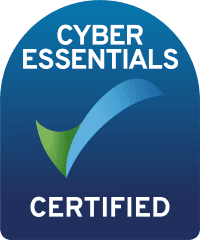Understanding whether a worker is employed or self-employed is a crucial task for businesses in the UK. Misclassifying a worker can lead to significant penalties from HMRC, along with back payments and potential legal action. The HMRC tool for checking if someone is employed or self-employed provides an easy way to clarify a worker’s status. In this guide, we’ll walk through the process of determining employment status, explain the importance of getting it right, and highlight the types of workers who typically need their status checked.
Why It's important to check if someone is employed or self-employed:
Correctly classifying workers is critical for meeting tax and National Insurance obligations. The HMRC Employment Status Tool helps businesses determine whether a worker is classified as employed or self-employed based on the nature of their working relationship. Proper classification ensures compliance with tax laws and protects your business from penalties. Whether you’re a small business or a large employer, verifying employment status is essential for legal and financial security and compliance.

Who Needs to Be Checked?
Some workers operate in roles where their employment status might not be immediately clear. Here are the most common types of workers that typically require an employment status check:
- Freelancers and Contractors:
- These workers often operate as self-employed, but their employment status should be checked if they work regularly for the same client or under the direct control of the business.
- Gig Workers:
- Workers in the gig economy, such as drivers and delivery personnel, may need to be classified as employees if they don’t have sufficient independence in their work.
- Agency Workers:
- Workers hired through an agency may need to have their status verified, especially if they perform work directly for a company over an extended period.
- Consultants:
- Consultants, particularly those working closely with the business under its control, may need to be treated as employees rather than independent contractors.
- Casual Workers:
- Part-time or seasonal workers may still qualify as employees if their working hours and tasks are controlled by the business.
- IR35 Workers:
- Workers hired through intermediaries, such as personal service companies, should be checked for compliance with IR35 regulations.
- Subcontractors:
- Subcontractors, especially in industries like construction, may need a status check if their working relationship with the business suggests employment.
Checking the employment status of these types of workers is crucial to avoiding misclassification and ensuring tax compliance.
How to Use the HMRC Employment Status Tool:
The Check Employment Status for Tax (CEST) tool, provided by HMRC, offers a quick and easy way to check whether a worker is employed or self-employed for tax purposes. The tool asks a series of questions to assess the worker’s relationship with your business, including their level of control over their work, financial risk, and contractual terms.
The tool is anonymous and doesn’t require personal information, but it’s important to keep accurate records of the results. You can use the results as evidence in case HMRC questions the worker’s employment status later. To get the most accurate result, answer each question truthfully based on the actual working relationship, not just what’s stated in a contract.
**Tip** Always keep a copy of the results and if you print out the answers, write the persons name on the sheet for reference later on if needed.
Penalties for Incorrect Classification:
If you incorrectly classify a worker as self-employed when they are actually an employee, your business could face significant penalties. HMRC may demand backdated National Insurance Contributions, taxes, and additional fines. The Check if someone is employed or self-employed tool is designed to help you avoid these costly errors and ensure your business remains compliant.
Authoritative Sources:
- HMRC Check Employment Status for Tax (CEST) Tool
- Gov.uk Guide on Employment Status
- HMRC Penalties and Compliance Guide
Need Help or Support?:
Need help determining the employment status of your workers? Contact Crystal HR & Payroll Ltd today for expert advice on staying compliant with HMRC regulations.
Frequently Asked Questions (FAQs):
- What is the HMRC tool to check employment status?
- The HMRC Check Employment Status for Tax (CEST) tool helps employers determine whether a worker is employed or self-employed for tax purposes based on the working relationship.
- Why does employment status matter?
- Correct classification ensures that the right taxes and National Insurance Contributions are paid. Misclassification can lead to penalties and backdated payments.
- What happens if I misclassify a worker?
- Misclassifying a worker can lead to fines and demands for unpaid taxes and National Insurance. Using the CEST tool helps ensure compliance.





